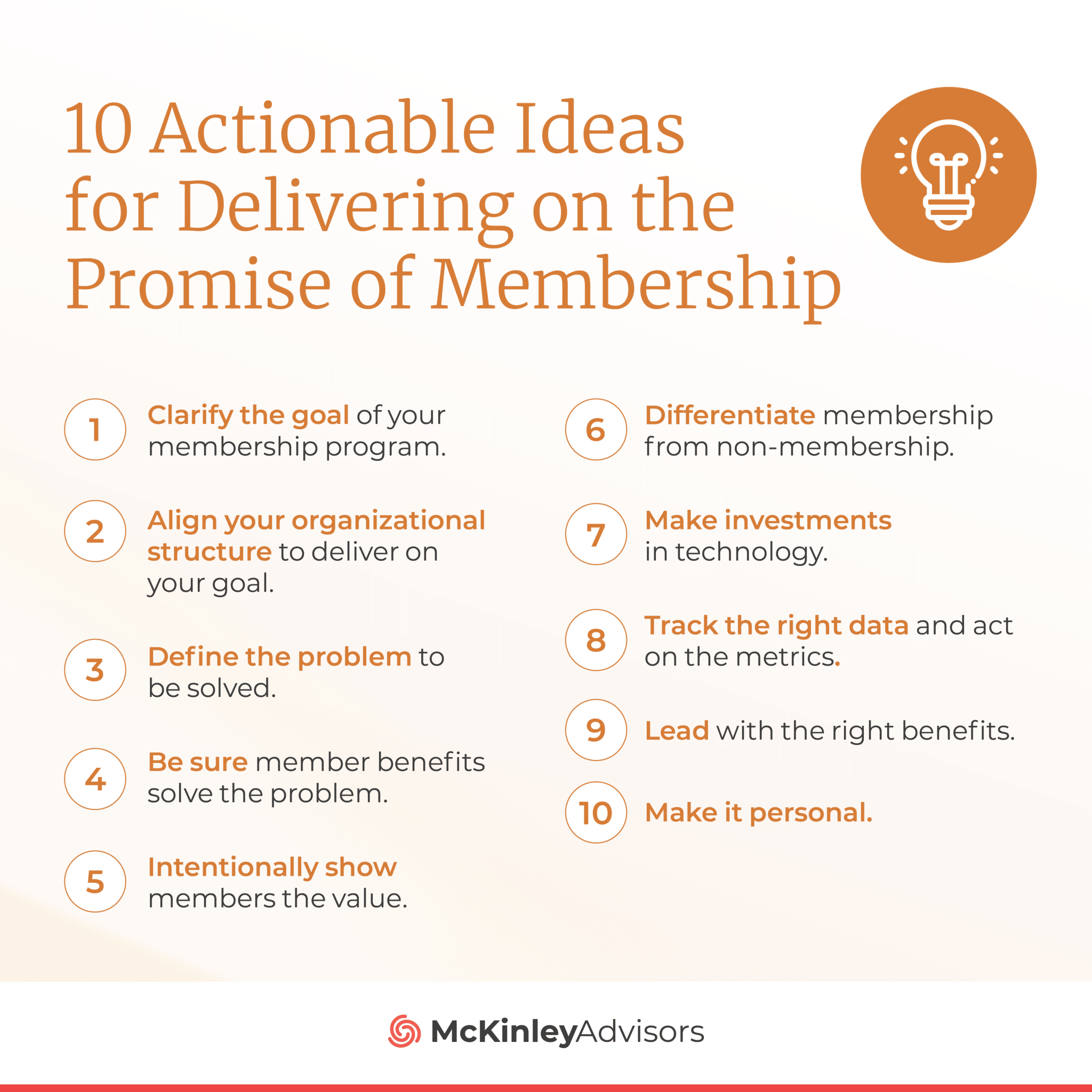Report Reveals Strategies to Overcome Membership Decline

A new report by the team at McKinley Advisors, Membership Reset: Delivering on the Promise of Membership, responds to ongoing trends surrounding membership in professional associations. The report specifically explores the membership barriers leaders face and opportunities to reverse the decline and stagnation in total membership numbers in recent decades. It is informed by a literature review, data sets collected from association members, and interviews with for-profit community-builders and association executives.
Common barriers to maximizing membership include unclear strategy and value propositions, lack of relevant resources dedicated to membership, hesitation around exploring new technology, and ambiguity in member vs nonmember benefits.
“Associations are not always resourcing membership adequately. Membership is being included as a priority in strategic plans, but there is a disconnect compared to the level of resources we are seeing committed to it,” said McKinley Practice Director Caroline Baugher.
The leaders we spoke to emphasized the importance of defining the universal problem membership solves for your members and focusing your efforts on the benefits that solve that issue. They also showed how powerful technology can be to foster community and engagement.
“The rise of AI tools and platforms is offering new options for connection in ways that traditional AMS’ have fallen short, but association leaders have said that they can be overwhelmed by AI and its implications,” said Baugher.
Opportunities to Refocus on Membership
Throughout our research, we pulled in membership lessons from successful community builders in the for-profit space.
“Indicators tell us that membership in the association space has been de-emphasized. But when we look at the for-profit sector, membership is booming,” said Baugher.
For-profits are bringing people together through community, content and education. They use membership programs to create a sense of belonging, identity and loyalty in addition to the transactional relationship.
“Building community and committing to an organizational structure that delivers on the promise of your envisioned membership model are non-negotiable tenants of a strong member program,” said Baugher. “It is the community, sense of belonging, and deep emotional resonance that keep people around over time. As long as access to the community is part of the problem membership seeks to solve for members, paying to be part of it is very much a thing.”
In addition to nurturing communities, organizations with very strong member programs (both for-profits and associations) consistently commit intentionality, apply strategy and adequately focus on delivering value through membership.
The report emphasizes taking action on these areas by clarifying the goal of your membership program, aligning your organization structure to meet your strategic membership goals, defining the problem to be solved, and tracking the right metrics.

Membership programs require ongoing care and attention. Ask: “How can we establish membership as a business model with its own strategic focus, set of metrics, and levers of success?”
Tags
Related Articles
The Emergency Nurses Association Utilizes Design Thinking to Reimagine its Awards Ceremony
In a prime example of intrapreneurship, the ENA utilized design thinking to innovate within the...
Report Reveals Strategies to Overcome Membership Decline
McKinley Advisors’ Membership Reset report provides a roadmap that association leaders can use to refocus...
Member Retention: More Than Just a Number
Learn how the AANA used humor and multichannel marketing to win back lapsed members.




